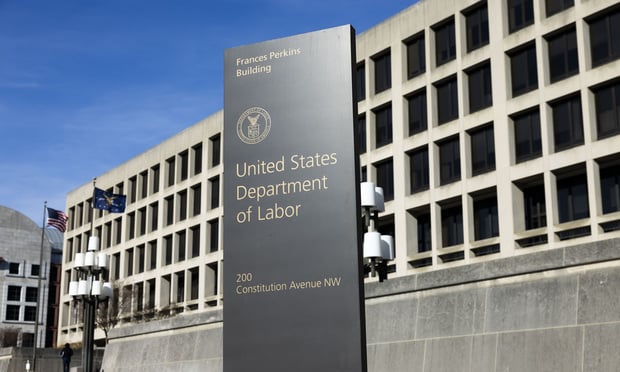The coronavirus already has wreaked havoc on many U.S. businesses, but a second wave of economic devastation is about to crash down on American companies. The COVID-19 pandemic is inflicting massive health care costs that could drive up health insurance rates by 40 percent or more. Any assumption to the contrary is a dangerous miscalculation that will leave employers exposed at this year's health insurance renewal.
Executives must understand that, despite conflicting analyses, the COVID-19 pandemic is almost certain to cause 2021 insurance rates to skyrocket. Companies must take immediate steps now to manage their health care costs and benefits plans accordingly to avoid a major financial hit amid an economic crisis.
Deferral of care
Many health care brokers are touting an April 2020 report from the respected actuarial firm Milliman on COVID-19's effect on health care costs. Milliman predicts a net reduction in overall health care costs resulting from the deferral of non-essential and elective procedures.
Most states followed a March 18 recommendation from the federal Centers for Medicare and Medicaid Services (CMS) to ban "all elective surgeries, non-essential medical, surgical, and dental procedures."
If the "deferral and elimination of care" continues, Milliman projects a total reduction in health care costs in 2020 between $75 billion and $575 billion. By reducing their health care spending, this would represent a massive cash infusion for employers who sponsor group health plans.
If deferrals continue, this logic is sound; but those promoting Milliman's rosy outlook of lower health care costs are overlooking several salient facts.
The whole story
Demand for deferred elective and non-essential procedures does not disappear over time; it builds up. When deferrals end, health care spending will balloon due to pent-up demand. The savings in the Milliman report are realistic only if the deferral of care were to push those procedures into 2021.
On April 19, however, CMS announced guidelines for lifting the ban on elective and non-essential procedures, prompting most states to begin allowing these procedures to resume.
Since few people could schedule elective procedures during the first half of the year, a crush of patients is now demanding surgery in the second half. To clear a backlog of over 80 cases, one neurosurgeon in Nashville, TN, told me he has been forced to add weekends to his surgery schedule.
The cost of COVID
The 30,000 hospitalizations of COVID-19 patients in the U.S. through mid-June have cost somewhere between $1.17 billion and $2.24 billion, according to one authoritative source. Yet, as of June 15, only about 0.646 percent of Americans have been infected; if the infection rate hits 20 percent, the treatment cost could soar to between $237 billion and $454 billion.
The ACA health care exchange Covered California is warning that insurance premiums could increase by 40 percent or more in 2021 as a result of COVID-19 costs. Their one-year projected costs for employer-sponsored health plans range from $34 billion to $251 billion solely as a result of COVID-19 testing and treatment.
Further compounding the cost problem, many insurers (e.g., Aetna and Horizon Blue Cross Blue Shield) suspended their prior-authorization rules for hospital admission and treatment. That means hospitals are allowed to admit and treat patients without any review of medical necessity or appropriateness, resulting in increased health care costs due to unnecessary admissions and treatment.
The problem for employers
At the root of the health care cost issue is a big lie: "It is not possible to control health care costs." For decades, insurance companies have spread this deception and reaped the benefits as executives ignored their company's health care costs.
Insurance companies perpetuate this lie for one reason: money. When executives believe they have no power over the cost of health care, they make no effort to negotiate prices. That enables insurers to allow costs to rise, which drives up premiums and ensures their revenue and profits increase.
Health care costs are poised to explode in the coming months as the deferral of elective procedures ends and COVID-19 treatment costs mount. Unless executives wise up to this big lie and take control of their health care spend, their companies could face a financial catastrophe.
Action steps
Forward-thinking CEOs and CFOs are solving their health care cost problem by forming partnerships with next-generation employee benefits advisers. These advisers, contractually working for the employer and not the insurance companies, show executives how to reclaim control of their health care budget, eliminate overspend, manage the quality and cost of care, and abolish employee out-of-pocket costs.
Driven by COVID-19 treatment costs, insurance rates for 2021 are set for a monumental increase – during a recession. By forming the right partnership and seizing control of their health care, however, employers can shield their finances and their employees from the coronavirus' second wave of economic devastation.
Nelson Griswold is the Managing Director of the NextGen Benefits Network, a national alliance of next-generation benefits advisers; a monthly columnist at Employee Benefit Advisor magazine; and author of industry bestsellers NextGeneration Healthcare, Breaking Through The Status Quo and DO or DIE: Reinventing Your Benefits Agency for Post-Reform Success. Learn more at NextGenBenefits.Network.
© 2025 ALM Global, LLC, All Rights Reserved. Request academic re-use from www.copyright.com. All other uses, submit a request to [email protected]. For more information visit Asset & Logo Licensing.








